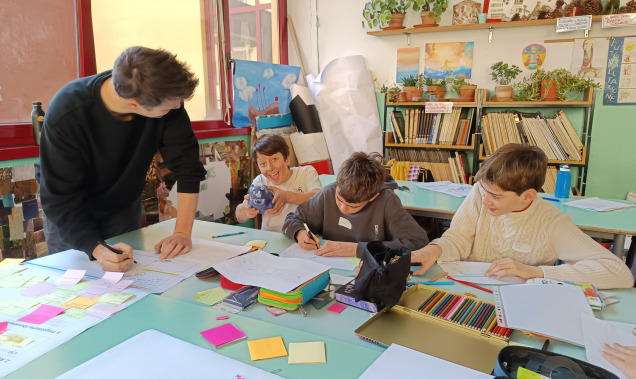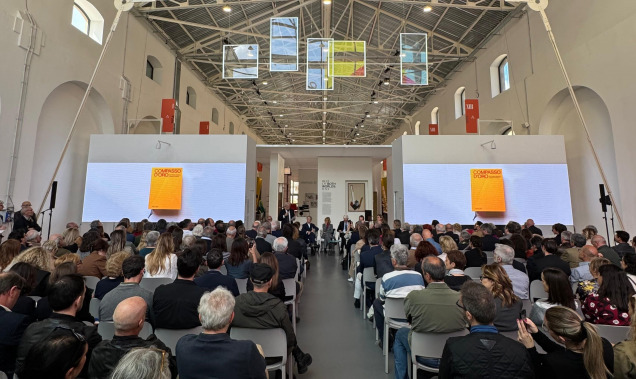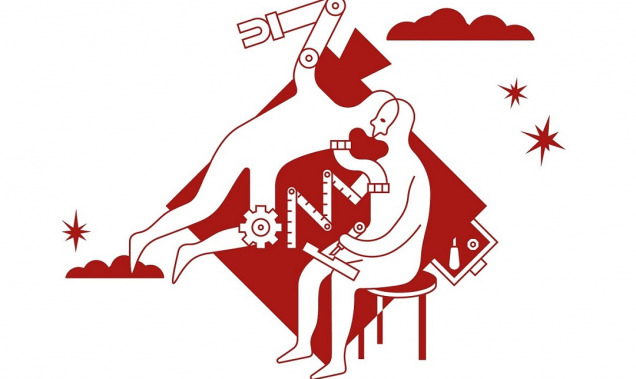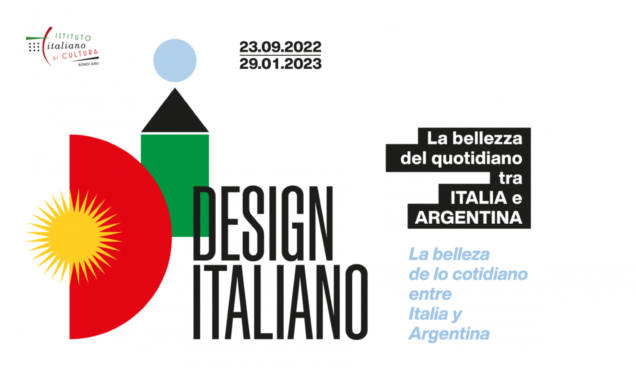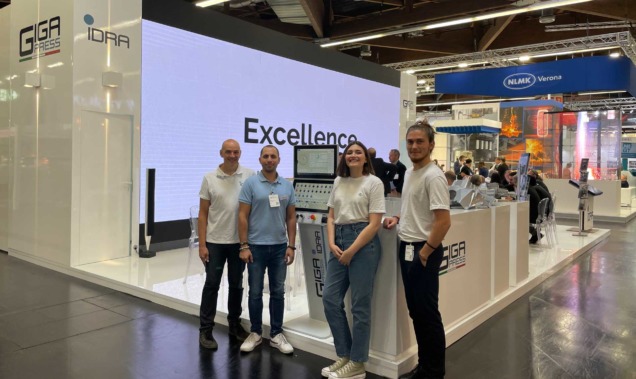Interaction20
Last week, from 2 – 7 February 2020, the Interaction Design Association’s Interaction Week came to Milan. Two of our own, Julie Blitzer and Megha Damani, were on the team planning and curating the events.
Over 1000 designers from around the world gathered to discuss, collaborate and consider the latest topics in design, including digital, interaction, research, and service. The theme for this year’s conference was A New Dawn, which asked participants to consider the new scope of action and influence – as technology and our sector evolves, how should we evolve with it? Didn’t make it to the events? We’ve collected the top themes discussed at #ixd20 and put a decidedly DGI spin on them.
Trust
A fundamental part of our approach to this year’s conference was contamination – we believe that in order to be prepared for this New Dawn, designers must be increasingly more open to ideas from outside thinkers and thus embrace multidisciplinary knowledge. The main stage welcomed many non-designers, in particular environmental psychologist Adeola Enigbokan and govtech entrepreneur Andrew Hoppin. Each of them touched on the topic of trust. At DGI we often say that we are not designing objects, brands, or even experiences, but rather relationships that people have with them. These relationships are fundamentally based on trust.
Adeola’s talk was enchanting, yet inherently relatable. She kicked off by telling the story of El Dorado in Colombia as a place with a long history and different meanings for different groups, a source of spiritual significance for some and animosity for others. Adeola proposed a protocol for creating trust amongst different groups as we approach projects, whether what we are designing is a physical space or an abstract one. For each of these steps, she offered examples that hit home for the audience, often from popular culture. Adeola suggests that we can design the encounter between two different groups of people if we consider the context and the environment in which it occurs. Adeola’s trust protocol suggested the following steps are necessary to build trust among different groups:
- A meeting place
- A shared language
- An open threshold, a commons
- A set of movements, gestures or rituals
- An interface
While Adeola’s examples were mostly of physical places, this protocol can definitely be applied to encounters in virtual worlds and online platforms.
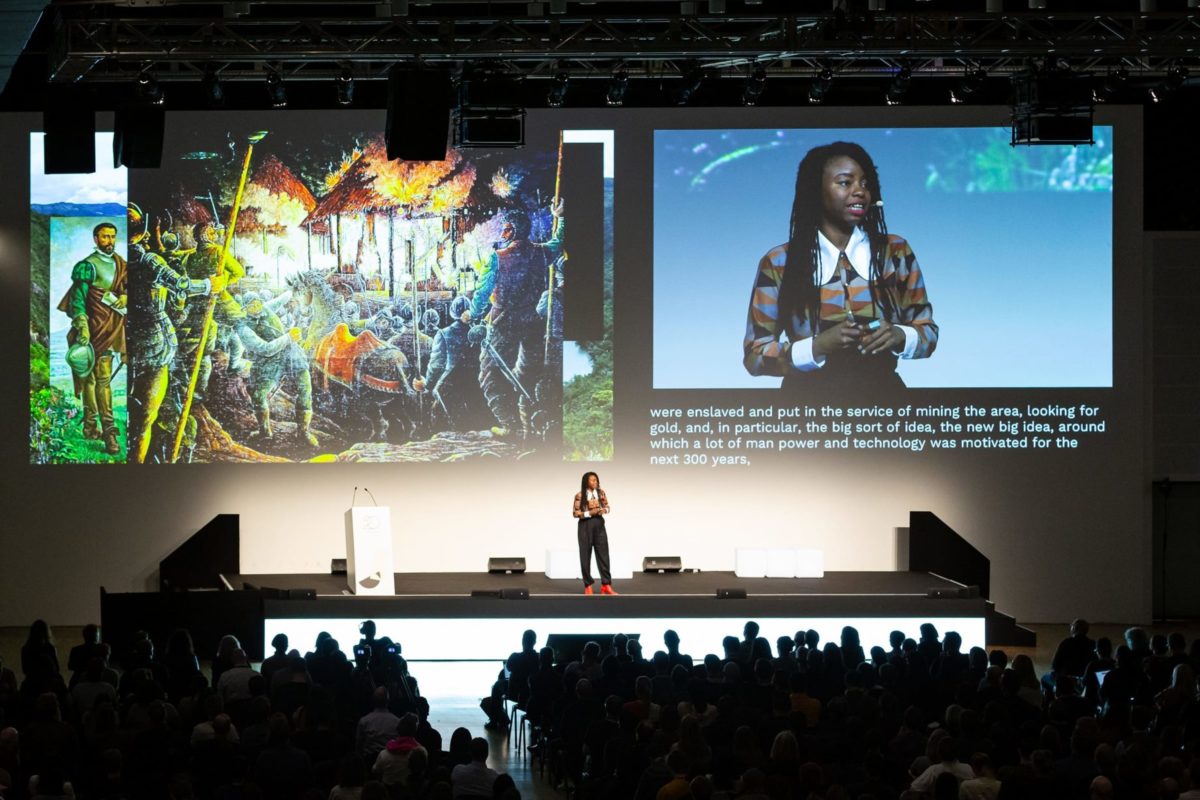
Andrew Hoppin introduced the idea of data trusts, as a human-centered approach to data-centric business models. He suggested that data trust and its AI should protect data for social ends rather than interpreting data for commercial ends. Data trusts can work to responsibly collect and protect data while collaborating with commercial entities.
In addition to these keynotes, there were also a series of talks on Trust, in particular, blockchain, consent, venture capital, and governance. As we look to 2020, trust will be a hot topic, whether considering how we create trust amongst people through design, or whether design can establish and protect trust in organizations and businesses.
Data humanism
Giorgia Lupi’s talk, The Human Side of Data, was perhaps the most anticipated keynote at Interaction 20. An Italian designer specialized in data visualisation, she is best known for her numerous books, exhibits at Triennale, as well as her recent collaboration with the H&M fashion brand & Other Stories. Giorgia walked through many of her landmark projects, sharing many uniquely beautiful ways in which data can be illustrated. Her work shows that data doesn’t have to be dry, but can be a form of art, while still communicating meaning. Today’s buzzwords include “big data,” but Giorgia suggested we can work with data that is also “small,” collected from single individuals, stories and often qualitative. Her data humanism manifesto set the tone for the rest of the conference, as many speakers discussed how design should play a role in humanizing technology, machines, intelligence and of course, data.
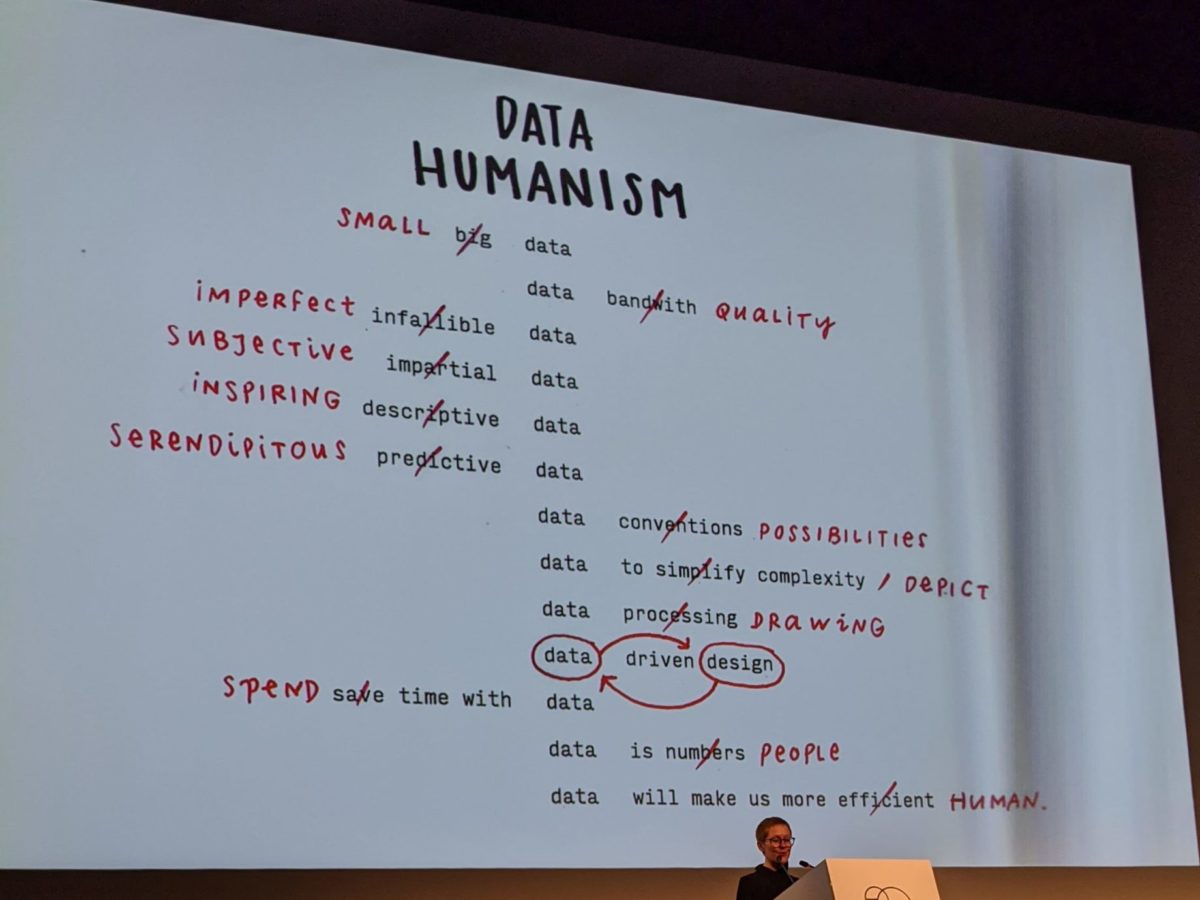
Design’s relationship with technology
For years design conferences have talked about technology as an enabler, a sort of superpower, that will usher in the next generation of living. This year’s Interaction 20 speakers took a decidedly different tone: technology exists in today’s world and is constantly mutating and evolving. Our role as designers to interpret and suggest how technology should be used. It’s a means to an end rather than the end goal. As designers, we have a responsibility to protect users from its risks and perils, while at the same time understanding how we can harness its power for social good. In the breakout sessions, there were talks address climate change, wellbeing, and ethics. the speakers provided examples of how good design, enabled by technology, can promote better habits and behaviors that can improve both ourselves, but also the environment.
Interaction Week includes the Education Summit, a conference for design educators. Derrick de Kerckhove, a professor at Politecnico di Milano, was the opening keynote speaker. He introduced the concept of a person’s digital twin: as we use services and assistants we are creating a digital version of ourselves, which includes all of our data. Derrick revealed himself to be a gaming enthusiast as many of his references came from role-playing video games like Second Life. He challenged the audience to consider a creative avatar-like approach to how we construct and perceive our digital twins. What do they look like? How do they speak? This perspective directly relates to projects our UX/UI team is working on right now at the studio. As we create a healthcare app and service, how should patients see and understand their digital twin? How will it be shown and shared with their care team? Perhaps it isn’t a literal representation, but nonetheless a user should understand and consider the digital version of him or herself that exists in a system or service.
Dystopia vs. Utopia
The tone of the theme for Interaction 20, A New Dawn, was decidedly positive, whereas Interaction 21 will be Design in Perilous Times. Regardless of whether we have a utopian or dystopian view of what’s to come, as designers today’s projects in digital transformation ask us to design for a future state.
Stuart Candy, a self-described “professional futurist” gave the closing keynote at the Education Summit. He shared a project called “A thing from the future,” in which he challenged students to create something from the future using waste. Candy offered a systematic approach to thinking about the future – a way to create scenarios to consider possible futures. The use of futures as plural is intentional, as he advocates that creative thinking can help us to “imagine and navigate” the many different possibilities ahead. A key piece of this systematic approach is open sourcing the tools for considering the future so all designers can use them.
The closing keynote for the main conference addressed similar themes, from a different perspective. Matt Cottam has spent the last year interviewing fellow design leaders for his Design Nonfiction project. His talk took us through a journey from the early days of interaction design, sharing video from classes he taught at RISD in the early 2000s, in which students experimented with building connected, sensing objects. Around the same time, the web emerged as a new medium and they moved from designing by hand to the intoxicating feeling of moving and changing pixels. He shared clips from the numerous interviews recounting an energetic time of discovery. The later videos presented the new era of discovery in which we consider intelligence, robotics and even synthetic biology. Matt closed Interaction 20 challenging the audience to engage with technologists and other thinkers to design “preferable futures.” His focus on experimentation and embracing the evolution of the medium for which we design inspires us to “get our hands dirty” and stay away from oversimplifying or mechanizing our work.
Conversational, voice and multi-modal user interfaces are maturing
Any number of tech trend articles will point to voice experiences as what’s now and what’s next. What these articles often ignore is how designers are learning how to create these experiences. Voice UI was addressed by numerous speakers, and even the Student Design Charette, a competition that occurs during the main conference. Working with Amazon, the students proposed solutions that use voice to create “empowering moments” for people facing disabilities or other challenges.
While our devices, apps, and platforms become increasingly more global, voice experiences must consider and adapt to each culture and language. Mary Parks, who has been designing voice experiences for 20 years, offered an introduction to linguistic bias and dialect, and then walked through some key aspects of research and designing conversational experiences, suggesting an ethnographic approach to listen to how others communicate in real contexts.
Siri Mehus explained other concerns for voice experience research in her excellent talk, but what remained with us the most is how she framed the difference between a voice user interface (VUI) and a graphical user interface (VUI). Siri said that GUIs are something we visit and navigate through, whereas VUIs are activities we participate in.
Yet another interesting perspective came from Deborah Harrison, one of the original architects and writers for Cortana, Microsoft’s digital assistant that was released in 2014. She argued that people should always be aware when a bot, not a human, is on the other side of a chat experience and then illustrated many cases for how bots can responsibly and respectfully communicate with end-users. Her talk discussed the challenges with one of the most known assistants from Microsoft – Clippy as a way to frame other suggestions. While bots are systematic, “conversation is inherently emotional.”
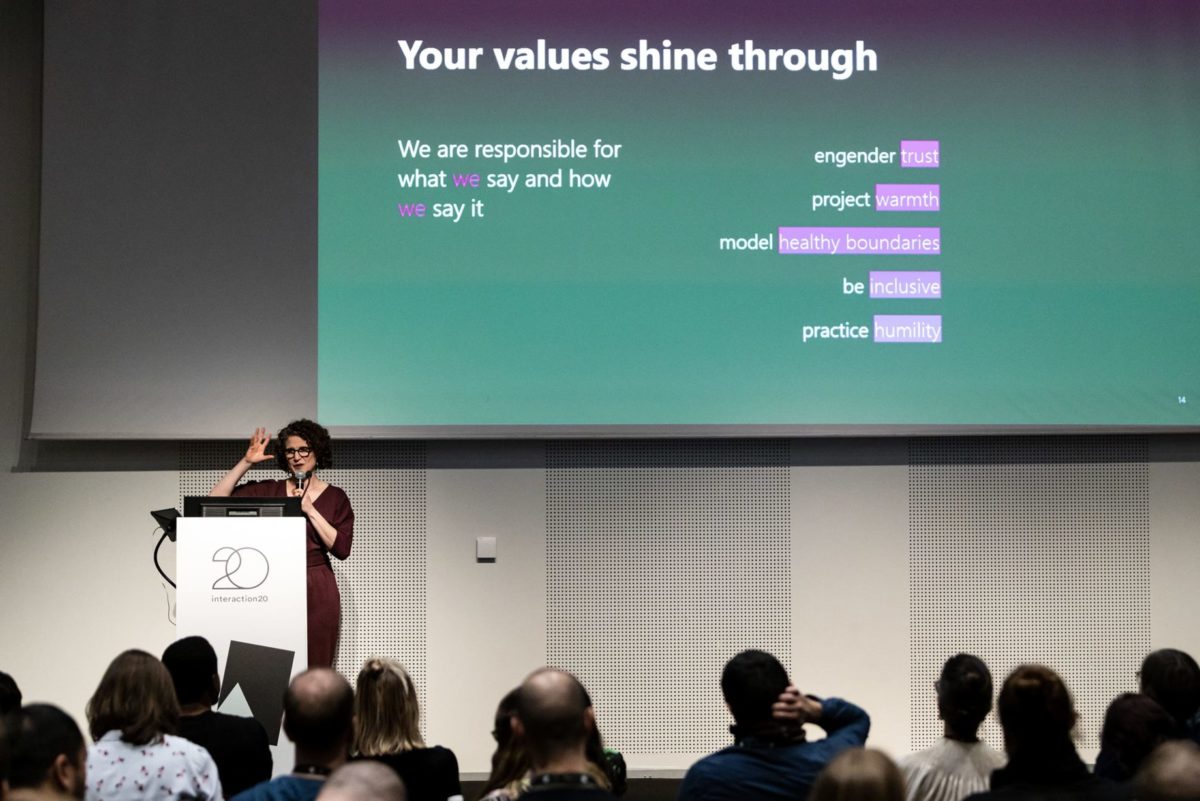
Wrapping up #ixd20
Since its inception, IxDA’s Interaction conference has been a key opportunity for the digital design community to examine the state of our practice today and where it is going tomorrow. This year’s Interaction Week 2020 in Milan was no exception. The international audience enthusiastically engaged with non-designers and gave a decidedly multidisciplinary spin, inspired by our theme and of course, Leonardo Da Vinci’s innovative mindset. This week we returned to our projects energized, with a new perspective on our work and the design challenges we seek to resolve.
Videos from this year’s keynotes will be available by the end of February and from talks within a month or two on IxDA’s Vimeo channel. All photos courtesy of IxDA unless otherwise indicated.
